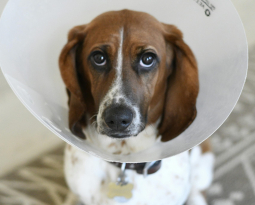Living with dog hair and cat hair is just a way of life for the typical pet owner. It seems normal to pull out the brush from time to time and help your dog with a matted underside from fun in the rain, or to pull out little tufts of fur from your cat’s neck that came loose over time. All dog owners know that grooming is just part of life, while cat owners may not think twice about grooming their cat, since they do it themselves. But grooming cats is just as important as grooming dogs.
Why Groom a Cat?
Grooming is more than taking care of their fur. It’s maintaining the health of their skin, eyes, ears, teeth, nails, and coat. So if you have a hairless cat, then grooming is still important!
Taking Care of Their Claws
If your cat doesn’t like using scratching posts, you’re more than familiar with the act of cutting their nails. Did you know that cutting their nails does more than protect your skin and your furniture? It protects your cat too!
When their nails are long, cats are more likely to get them caught and stuck on everyday objects, such as toys, carpeting, furniture, your clothing, or landscaping outside. While it’s in their nature to scratch, some cats are very particular about what they use to dull down their claws. If your cat doesn’t have access to that preferred material, this increases the chances of them injuring their paws and ripping out a nail.
Taking Care of Their Ears
Your cat’s ears shouldn’t need too much attention. But if your cat has fine hair under their ears or is an outdoor cat, you should check their ears often for mites, debris, or bumps on or under their ears.
When you’re cleaning your cat’s ears, which is usually not needed, stick to cleaning their ear flap and not going deep into their ear canal. We recommended using a good quality ear cleaner without hydrogen peroxide or alcohol.
If your cat has ear mites or is prone to buildup, talk with your vet about the best way to remedy the issue.
Helping Maintain Their Appearance
Cats are beautiful animals. Their fur (or lack thereof) is part of their identity. While normal matted areas and stains are mostly cosmetic and don’t affect their standard of living, it does affect how they look and how you pet them! If you pull at a matt, it can also cause them some discomfort.
Regular grooming, whether it’s a trip to the groomers or brushing them with a de-furring comb or pet brush, can do wonders. It can help pull out loose hair and dead skin. If you have an older cat, or one that can’t (or doesn’t) groom themselves as much, brushing them gives them a helping hand.
Some cat owners opt to shave their cats as well to help them cool off in the summer, to get out pesky matts, or to help keep them clean. Most cats don’t mind this and if your cat is one of the few that does, there are some tricks you can use to fool your cat into thinking it still has a full body of fur. Think of shaving their entire body, but leaving their head, tip of the tail, and paws untouched.
Remember, a well groomed cat is a happy cat!
Cleaning Your Cat’s Teeth
A lot of owners don’t think about their cat’s teeth. But regular dental care is one of the best ways to help keep your cat’s teeth and gums healthy. With cats, brushing their teeth can be incredibly difficult. We recommend talking with your vet and finding alternative ways to keep their teeth clean, especially if you’re trying to start the routine later in their life.
Grooming Lets You Do a Health Check
When you’re grooming your pet, you have the opportunity to look and feel for any abnormalities. When you’re brushing them, use long strokes and feel for any suspicious bumps or lumps.
When you are cleaning his teeth, you might discover sore or bleeding gums and bad breath that may indicate a health problem. If you choose an alternative way to take care of their teeth, check their toys regularly for any sign of blood and watch how they eat. If they’re avoiding dry food, it might be a sign that something is wrong.
For ears, it gives you a chance to check for mites and bug bites, as well as dried blood.
While you have them with you, look into their eyes and check for cloudiness, redness, or discharge. If you find anything, contact Acoma Animal Clinic in Tucson for a recommendation on what to do to help your cat.







